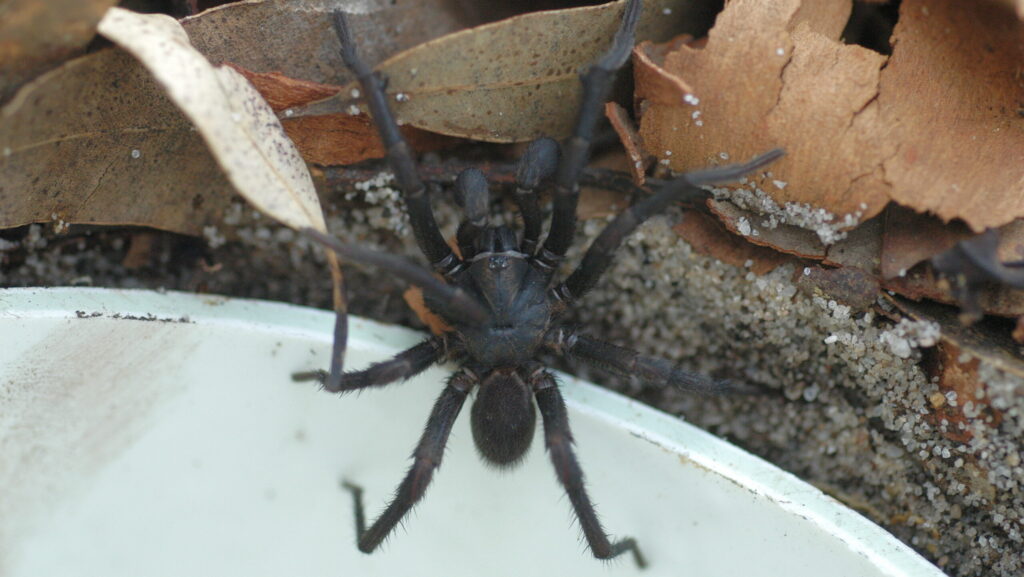
In the vast realm of arachnids, certain species stand out for their impressive size combined with potent venom. The largest venomous spider ever recorded continues to captivate scientists, arachnologists, and the general public alike. These remarkable creatures, while often misunderstood and feared, play crucial roles in their ecosystems and provide valuable insights into evolutionary biology, venom research, and medical applications. This article explores the fascinating world of giant venomous spiders, their characteristics, habitats, and the important distinctions between size, venom potency, and actual danger to humans.
The Brazilian Wandering Spider: A Record Holder
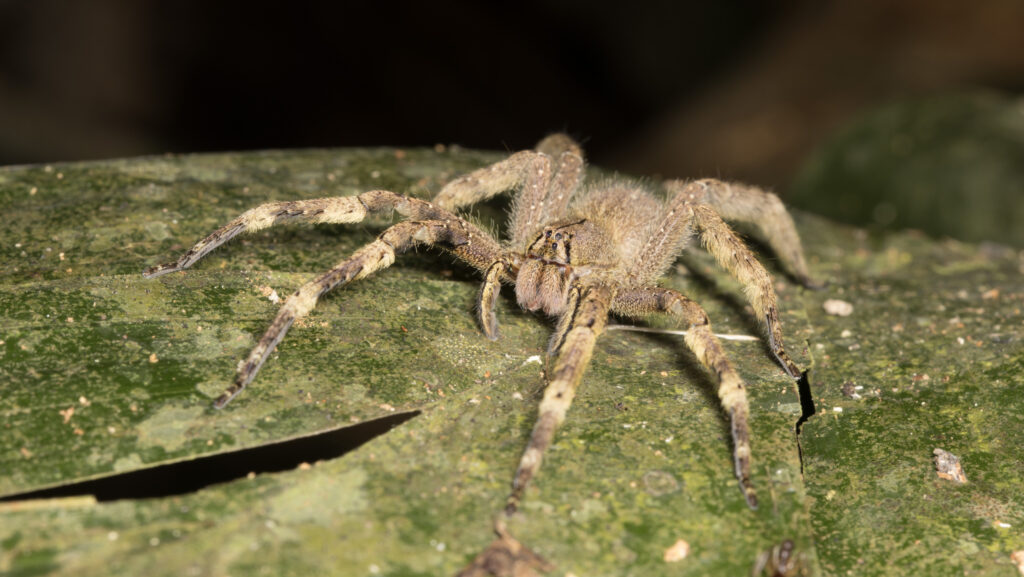
The Brazilian wandering spider (Phoneutria fera and related species) is widely recognized as the largest venomous spider in terms of legspan and body mass combined with highly toxic venom. With a legspan reaching up to 7 inches (18 cm) and a body length of approximately 2 inches (5 cm), these impressive arachnids are formidable hunters. Their common name derives from their habit of wandering the jungle floor at night rather than building webs, actively hunting prey. Belonging to the family Ctenidae, these nocturnal predators are also known as “banana spiders” because they occasionally hide in banana shipments, leading to unexpected encounters with humans outside their native range. Their venom contains a complex mixture of toxins including the neurotoxin PhTx3, which can cause intense pain, breathing problems, and in rare cases, death if left untreated.
The Sydney Funnel-web: Potent Venom in a Robust Package

Australia’s Sydney funnel-web spider (Atrax robustus) stands as another contender for the largest venomous spider title when considering body robustness and venom potency together. Males of this species can reach body lengths of up to 1.5 inches (3.8 cm) with leg spans of approximately 4 inches (10 cm). What makes these spiders particularly noteworthy is their exceptionally toxic venom, which contains a compound called delta-atracotoxin that specifically targets the human nervous system. Before the development of antivenom in 1981, bites from male Sydney funnel-web spiders resulted in thirteen recorded human fatalities. These glossy, dark-colored spiders build characteristic funnel-shaped webs in moist, sheltered locations throughout eastern Australia. Their aggressive defensive behavior when threatened adds to their fearsome reputation among Australia’s already impressive array of venomous creatures.
The Brazilian Salmon Pink Birdeater: Size and Mild Venom

The Brazilian salmon pink birdeater (Lasiodora parahybana) represents an interesting case in the discussion of large venomous spiders. As the third largest tarantula species in the world, these impressive arachnids can reach leg spans of up to 11 inches (28 cm) and body lengths of 4 inches (10 cm). Despite their intimidating size, their venom is relatively mild to humans, causing effects similar to a bee sting in most cases. This species inhabits the Atlantic forest regions of northeastern Brazil, where they construct burrows in the forest floor. While technically venomous like all spiders, the Brazilian salmon pink birdeater relies more on its impressive size, urticating hairs (which can cause skin irritation), and large fangs for defense rather than venom potency. This demonstrates the important distinction between size and venom toxicity when discussing “largest venomous spiders.”
Understanding Venom Potency vs. Spider Size
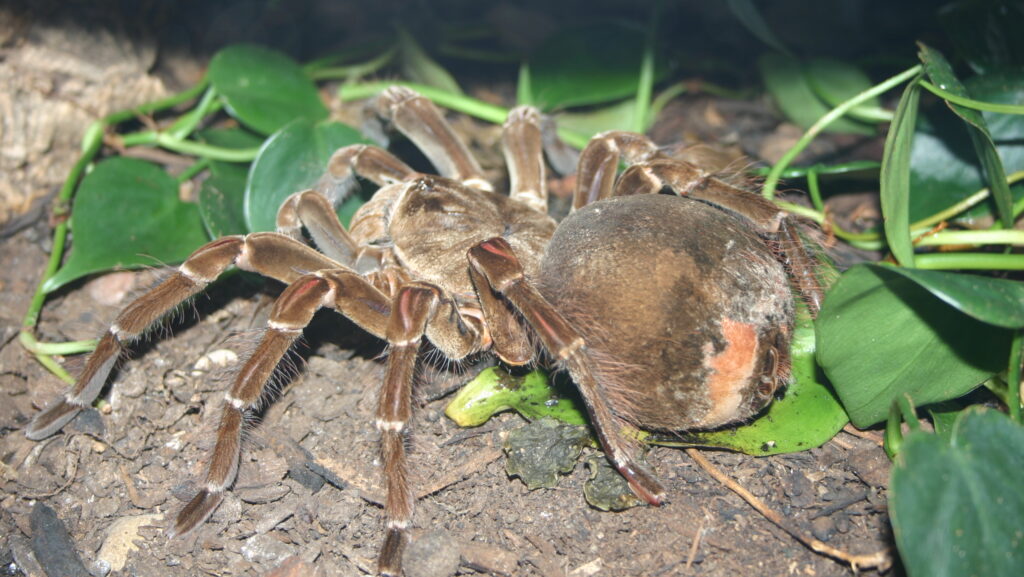
When discussing the “largest venomous spider,” it’s crucial to understand the relationship between size and venom potency. Some of the world’s largest spiders, like the Goliath birdeater (Theraphosa blondi), possess relatively mild venom despite their enormous size, while much smaller spiders can have extremely toxic venom. Venom potency is determined by the specific mixture of proteins, peptides, and other compounds that evolved to suit each spider’s ecological niche and hunting strategy. For example, active hunters like the Brazilian wandering spider evolved potent, fast-acting neurotoxins to quickly immobilize prey, while ambush predators like tarantulas often rely more on physical attributes and mechanical strength. The scientific measure of venom toxicity is typically expressed as LD₅₀ (the dose required to kill 50% of test subjects), with lower values indicating more potent venom. This measurement system helps researchers compare venom potency across different spider species regardless of their physical size.
Geographical Distribution of Giant Venomous Spiders
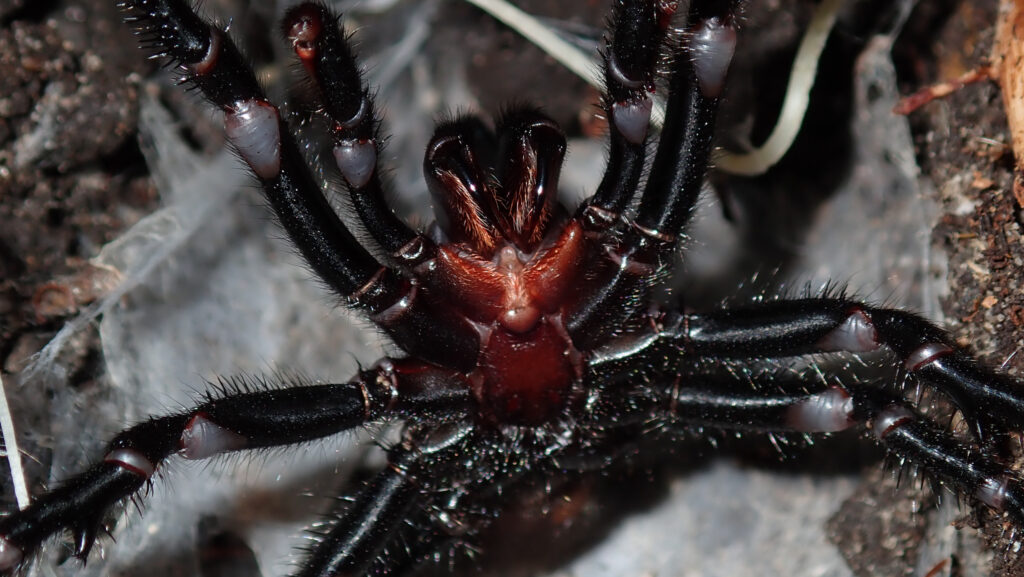
The world’s largest venomous spiders tend to be concentrated in specific geographical regions with suitable climate conditions. Tropical and subtropical environments in South America, particularly Brazil, Colombia, and Venezuela, host several of the largest venomous spider species, including the Brazilian wandering spider and various large tarantulas. Australia is another hotspot for large venomous spiders, with the Sydney funnel-web spider and related species dominating the eastern regions of the continent. Africa contributes to the list with the King baboon spider (Pelinobius muticus), a large and venomous tarantula species native to East Africa that can reach leg spans of up to 8 inches (20 cm). The geographical distribution of these species is not coincidental but rather the result of evolutionary processes spanning millions of years, with factors such as climate, prey availability, and geographical isolation playing crucial roles in the development of these impressive arachnids.
Hunting and Feeding Behaviors

The largest venomous spiders employ diverse hunting strategies that correlate with their physical attributes and venom properties. The Brazilian wandering spider exemplifies the active hunter approach, roaming the forest floor at night to ambush prey with lightning-fast strikes followed by a powerful venomous bite. In contrast, the Sydney funnel-web spider employs an ambush strategy, waiting at the entrance of its distinctive funnel-shaped web for vibrations that signal passing prey. Large tarantulas like the Brazilian salmon pink birdeater often combine ambush tactics with active hunting, using their impressive speed to chase down prey when necessary. The feeding process typically begins with venom injection, which both immobilizes the prey and starts the digestive process externally through enzymatic action. After the prey is subdued, these spiders use their chelicerae (fangs) and pedipalps to manipulate the food while digestive enzymes break down the tissues into a liquid form that can be consumed. These varied hunting strategies have evolved over millions of years to optimize each species’ success in its specific ecological niche.
Reproduction and Lifecycle
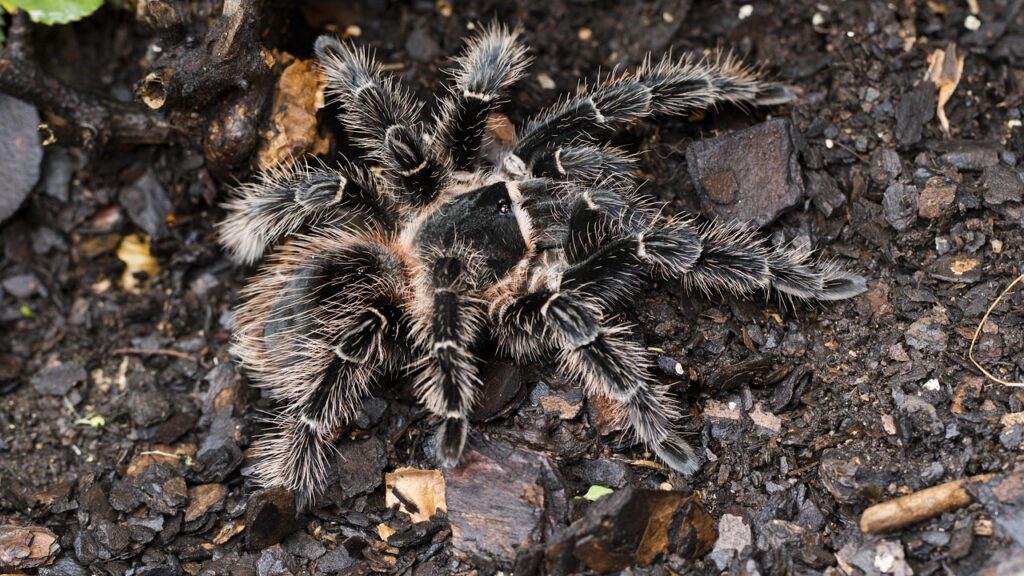
The reproduction of large venomous spiders involves fascinating behaviors and significant sexual dimorphism in many species. Male Brazilian wandering spiders, once mature, embark on dangerous journeys to find receptive females, using pheromone trails as guidance. The mating process itself is fraught with risk, as males must carefully approach females while performing specific movements to avoid being mistaken for prey. Female Sydney funnel-web spiders can produce egg sacs containing up to 100 eggs, which they guard vigilantly in their burrows until the spiderlings emerge. In the case of the Brazilian salmon pink birdeater and other tarantulas, females can live remarkably long lives, with some species surviving 15-30 years in captivity, while males typically live only a few years after reaching sexual maturity. The lifecycle from egg to mature adult varies significantly among species, with tarantulas often taking 2-5 years to reach full size and sexual maturity, while the Brazilian wandering spider may complete its lifecycle in just one year under optimal conditions.
Venom Composition and Medical Significance

The venom of large spiders represents complex chemical cocktails that have evolved over millions of years for hunting and defense. The Brazilian wandering spider’s venom contains neurotoxic components that affect ion channels in nerve cells, causing excruciating pain, inflammation, and potential respiratory complications in human victims. Fascinatingly, this venom also contains compounds being studied for potential treatments for erectile dysfunction and cardiac diseases. Sydney funnel-web spider venom contains delta-atracotoxins that specifically target the human nervous system, making it particularly dangerous to primates while having less severe effects on other mammals. Modern antivenoms have dramatically reduced fatalities from these spiders, with the last confirmed death from a Sydney funnel-web bite occurring before antivenom became available in 1981. The medical study of spider venoms has led to significant pharmaceutical developments, with compounds derived from or inspired by spider venoms now being investigated for applications ranging from pain management to cancer treatment and agricultural pest control.
Human Encounters and Safety Measures
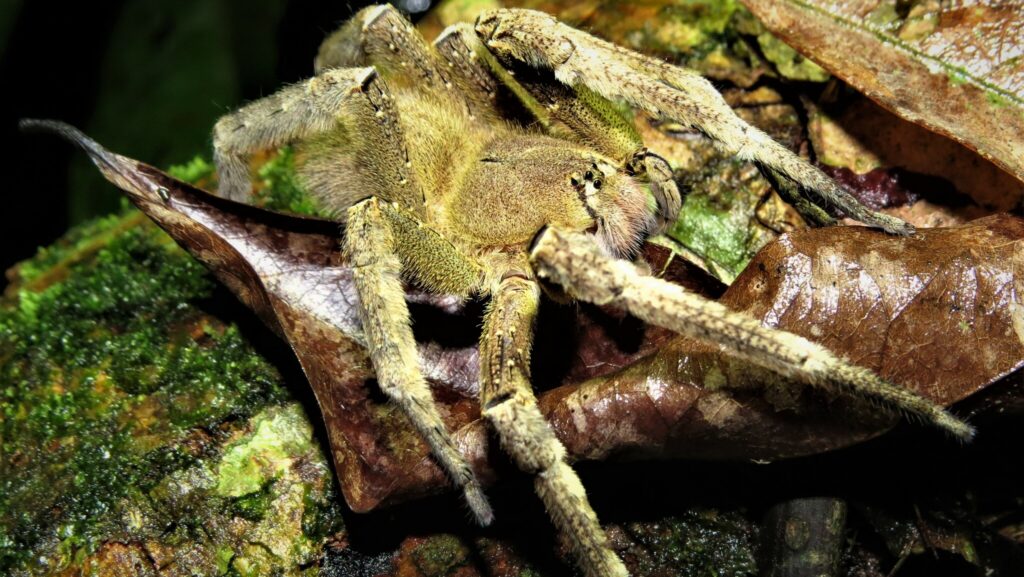
Human encounters with large venomous spiders occur most frequently in areas where human habitation overlaps with the spiders’ natural habitat. The Brazilian wandering spider has earned notoriety for occasionally appearing in shipments of bananas and other produce, leading to encounters far from its native range. When confronted, these spiders often display a characteristic threat posture, raising their front legs and exposing their fangs before striking. Safety measures for residents in regions with dangerous spiders include shaking out shoes and clothing before wearing them, using caution when reaching into dark spaces or garden areas, and maintaining awareness of local spider species. For travelers to regions with dangerous spiders, basic precautions include using mosquito nets while sleeping, checking bedding before use, and being cautious around wood piles or other natural hiding places. Most importantly, anyone bitten by a suspected dangerous spider should seek immediate medical attention, as prompt treatment with appropriate antivenom significantly improves outcomes in severe envenomation cases.
Conservation Status and Threats

Many large venomous spider species face increasing threats from habitat destruction, climate change, and collection for the exotic pet trade. The Brazilian salmon pink birdeater has experienced significant habitat loss as the Atlantic Forest region of Brazil has been reduced to less than 10% of its original extent due to agricultural expansion and urban development. The Sydney funnel-web spider faces challenges from urban sprawl around Sydney, which fragments populations and disrupts natural breeding patterns. Several large tarantula species appear on the IUCN Red List and CITES appendices, restricting international trade to protect wild populations. Conservation efforts include habitat preservation initiatives, breeding programs in zoological institutions, and regulations governing the collection and trade of these fascinating arachnids. While fear of spiders (arachnophobia) makes spider conservation a harder sell to the public than more charismatic endangered species, education about the ecological importance of these predators and their potential value to medical research has helped improve conservation outcomes in recent years.
Misconceptions and Cultural Perspectives
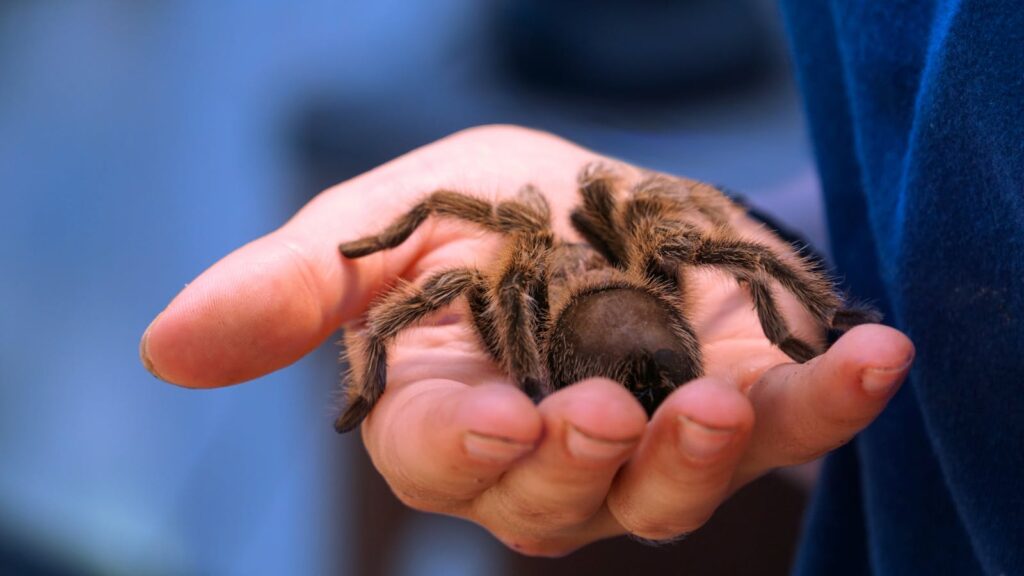
Large venomous spiders have inspired both fear and fascination across human cultures, often leading to misconceptions that exaggerate their danger. Despite their fearsome reputation, even the most dangerous spiders rarely bite humans unless threatened or accidentally pressed against the skin. Statistics reveal that deaths from spider bites are exceedingly rare, with bee and wasp stings causing far more fatalities annually worldwide. Cultural perspectives on spiders vary dramatically across different societies, from the spider deity Anansi in West African folklore to the negative portrayal of spiders in modern Western media. In some cultures, large spiders are considered delicacies; for example, certain indigenous communities in Venezuela and Cambodia prepare tarantulas as food. These cultural differences highlight how human perceptions of these animals are shaped more by cultural transmission than by actual risk assessment. Efforts by zoos, museums, and wildlife educators to provide accurate information about these misunderstood creatures have helped reduce unfounded fears while fostering appreciation for their ecological importance and evolutionary adaptations.
Scientific Research and Future Discoveries

The study of large venomous spiders continues to yield valuable scientific insights across multiple disciplines. Ongoing research into the Brazilian wandering spider’s venom has identified promising compounds for treating cardiovascular diseases, pain management, and erectile dysfunction, demonstrating the potential medical applications of these complex biochemical cocktails. Arachnologists using modern genetic analysis techniques have revised our understanding of evolutionary relationships among large spider species, sometimes revealing that what were thought to be single species are actually multiple distinct species with different venom compositions. The field of biomimicry draws inspiration from spider silk—one of nature’s strongest materials—which has applications ranging from bulletproof vests to medical sutures. Looking forward, scientists predict that undiscovered spider species likely exist in remote tropical regions, particularly in the upper canopies of rainforests and other understudied ecosystems. Climate change presents both challenges for spider conservation and new research questions about how these highly specialized predators will adapt to changing environmental conditions.
Keeping Giant Spiders in Captivity

The practice of keeping large venomous spiders in captivity has grown in popularity among specialized exotic pet enthusiasts, though it carries significant responsibilities and, in some jurisdictions, legal requirements. The Brazilian salmon pink birdeater is among the most popular large tarantulas in captivity due to its impressive size, striking coloration, and relatively docile temperament compared to more defensive species. Proper husbandry requires species-specific enclosures that accommodate natural behaviors, with appropriate substrate depth for burrowing species, climbing structures for arboreal species, and careful attention to temperature and humidity requirements. Responsible keepers maintain secure enclosures to prevent escapes and minimize handling to reduce stress to the animal and risk to the keeper. Professional institutions like zoos and research facilities maintain collections of more dangerous species like the Brazilian wandering spider and Sydney funnel-web spider, which require advanced safety protocols and are generally unsuitable for private ownership. These institutional collections serve important roles in education, conservation breeding programs, and venom research that benefits human medicine.
Conclusion
The title of “largest venomous spider” encompasses a complex interplay of physical size, venom potency, and ecological adaptations. The Brazilian wandering spider, Sydney funnel-web spider, and Brazilian salmon pink birdeater each claim aspects of this title, depending on which characteristics are emphasized. These remarkable creatures have evolved sophisticated venoms and hunting strategies over millions of years, resulting in highly specialized predators that maintain balance in their ecosystems. While fear of large venomous spiders is common, education about their actual behaviors, scientific importance, and the true risks they pose helps promote both human safety and spider conservation. As research continues, these impressive arachnids will likely continue to surprise us with new insights into evolution, ecology, and potential medical applications, further demonstrating that even creatures that inspire fear deserve our understanding and protection.
